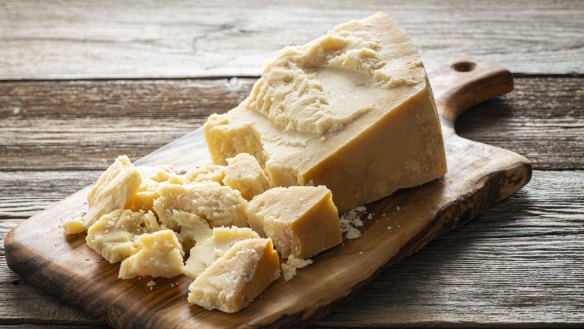The best way to store blocks of cheddar and parmesan cheese

What is the best way of storing blocks of cheddar and parmesan? After opening, mine always seems to start growing mould after a few days. J. Jilek
Here's a trick I learned from the grand dame of Australian cookery, Stephanie Alexander.
Wrap cheese in greaseproof paper, baking paper, beeswax wrap, or specialty cheese wrap. Place in a large plastic container with holes drilled into the lid and the bottom lined with a sushi mat.
The holes allow a little circulation of air and the paper acts as a barrier to the mould. Also try buying less cheese but more often.
I am a strict recipe-following engineer. Hence, I am frustrated by recipes that provide inexact details regarding quantities. Why don't recipe writers provide clear mass or volume measures for all ingredients? P. Ellis
I was always instructed by my editors that recipes need to be egalitarian and accessible. In the perfect world, all home cooks would have a set of digital scales, and all measurements for ingredients would be in grams.
But many homes don't have good scales or even an accurate set of cup or spoon measures. Also, many people will create a menu from the recipe, and you don't want to have a recipe that leaves a quarter of an onion left over. Baking recipes are all ratio-based and you will notice the ingredients are all listed in exact quantities.
But when it comes to non-baking recipes, such as a braise, the ratio of ingredients is not essential to the outcome of the dish, so recipe writers tend to be more descriptive than prescriptive with ingredients (hence, "a small onion" or "two medium carrots", for example).
But when you're cooking dishes such as roasts, gratins, stews, grills and marinades, it's OK to relax, knock the top off a delicious red, let the desire for precision go, and enjoy the moment.
I made pea and ham soup but found it didn't agree with me. H. Leggat
Dried legumes contain large amounts of a complex sugar called raffinose, which the body has a hard time breaking down. It hits the lower gut, where it ferments and is turned into gas.
Try using a bag of frozen peas instead of split peas. Add them to the soup once the ham hock is tender and simmer for a further hour, until the peas are quite soft. The peas won't completely disintegrate the way split peas do but they will become very soft.
You can liquidise some or all of the soup, but there is something quite satisfying about a hot mouthful of very mushy peas in a smoky ham stock.
Send your vexing culinary conundrums to brainfood@richardcornish.com.au or tweet to @foodcornish
Appears in these collections
- More:
- Food
- Brain food
